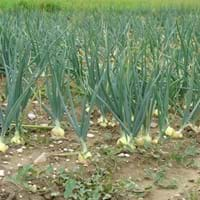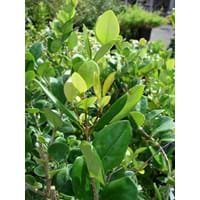Life Span
Perennial
Annual
Type
Bulb or Corm or Tuber
Broadleaf Evergreen
Origin
World/Pandemic, North America, Europe, Russia/Siberia, Northern Africa, Asia, India
Eastern Asia
Types
Not Available
Not Available
Number of Varieties
Not Available
Habitat
Cropland, Farms, gardens
foothill woods, Hills, Lowland
USDA Hardiness Zone
Not Available
7-10
AHS Heat Zone
Not Available
Not Available
Habit
Not Available
Upright/Erect
Flower Color
White, Yellow green
White
Flower Color Modifier
Bicolor
Bicolor
Fruit Color
Not Available
Green, Black
Leaf Color in Spring
Blue Green, Yellow green
Dark Green
Leaf Color in Summer
Green, Gray Green
Dark Green
Leaf Color in Fall
Green, Gray Green, Yellow green
Dark Green
Leaf Color in Winter
Not Available
Dark Green
Leaf Shape
Linear
Acicular
Plant Season
Spring, Summer
Spring, Summer, Fall, Winter
Sunlight
Full Sun, Partial Sun
Full Sun, Partial Sun, Partial shade
Type of Soil
Loam, Sand
Loam, Sand
The pH of Soil
Neutral
Acidic, Neutral, Alkaline
Soil Drainage
Well drained
Average
Bloom Time
Spring, Late Spring, Early Summer
Late Spring, Early Summer, Summer
Tolerances
Drought
Drought, Salt
Where to Plant?
Ground, Pot
Ground
How to Plant?
Seedlings, Sets
Rooted stem cutting, Stem Cutting, stem tip cuttings
Plant Maintenance
Medium
Medium
Watering Requirements
Keep the ground moist but not water-logged, Requires a lot of watering, Water twice a day in the initial period
Average Water Needs, Do not water frequently
In Summer
Lots of watering
Lots of watering
In Spring
Moderate
Moderate
In Winter
Average Water
Average Water
Soil pH
Not Available
Acidic, Neutral, Alkaline
Soil Type
Not Available
Loam, Sand
Soil Drainage Capacity
Well drained
Average
Sun Exposure
Full Sun, Partial Sun
Full Sun, Partial Sun, Partial shade
Pruning
Remove damaged leaves, Remove dead branches, Remove dead leaves
Remove damaged leaves, Remove dead branches, Remove dead leaves
Fertilizers
All-Purpose Liquid Fertilizer
All-Purpose Liquid Fertilizer, Apply N-P-K, fertilize in growing season
Pests and Diseases
Red blotch
Aphids, Bacterial leaf spot, Galls, Honey fungus, Red blotch, Wasps
Plant Tolerance
Drought
Drought, Full Sun, Shade areas, Variety of soil types
Flower Petal Number
Single
Single
Showy Fruit
Not Available
No
Edible Fruit
Not Available
No
Fragrant Bark/Stem
Yes
No
Foliage Texture
Medium
Medium
Foliage Sheen
Matte
Glossy
Attracts
Not Available
Aphids
Allergy
Not Available
Not Available
Aesthetic Uses
Not Used For Aesthetic Purpose
Borders, Not Used For Aesthetic Purpose
Beauty Benefits
Not Available
Not Available
Environmental Uses
Air purification
Air purification
Medicinal Uses
Asthma, Bronchitis, cholesterol-lowering, Cough, Diabetes, Digestion problems, Diuretic, High blood pressure
Antibacterial, Hypotensive, Tonic
Part of Plant Used
Whole plant
Leaves
Other Uses
Culinary use
Used as an ingredient in coffee
Used As Indoor Plant
Yes
No
Used As Outdoor Plant
Yes
Yes
Garden Design
Not Available
Container, Foundation, Hedges, Mixed Border, Screening, Wind Break, Topiary, Bonsai, Espalier
Botanical Name
ALLIUM cepa 'Vidalia'
LIGUSTRUM japonicum
Common Name
Garden Onion, Sweet Onion, Vidalia Onion
Japanese Ligustrum
Waxleaf Ligustrum
Texas Privet
Waxleaf Privet
In Hindi
मीठा प्याज
Japanese Privet
In German
Sweet Onion
japanische Privet
In French
oignon doux
Privet japonaise
In Spanish
Cebolla dulce
Privet japonesa
In Greek
γλυκό Κρεμμύδι
Ιαπωνικά Privet
In Portuguese
Cebola doce
Privet Xapanese
In Polish
słodka Cebula
Xapanese Privet
In Latin
Dulcis cepa
Japanese Privet
Phylum
Tracheophyta
Tracheophyta
Class
Magnoliopsida
Magnoliopsida
Order
Asparagales
Lamiales
Family
Liliaceae
Oleaceae
Clade
Angiosperms, Asparagales, Monocots
Angiosperms, Asterids, Eudicots
Tribe
Not Available
Not Available
Subfamily
Not Available
Not Available
Importance of Sweet Onion and Japanese Privet
Want to have the most appropriate plant for your garden? You might want to know the importance of Sweet Onion and Japanese Privet. Basically, these two plants vary in many aspects. Compare Sweet Onion and Japanese Privet as they differ in many characteristics such as their life, care, benefits, facts, etc. Every gardener must at least have the slightest clue about the plants he wants to plant in his garden. Compare their benefits, which differ in many ways like facts and uses. The medicinal use of Sweet Onion is Asthma, Bronchitis, cholesterol-lowering, Cough, Diabetes, Digestion problems, Diuretic and High blood pressure whereas of Japanese Privet is Antibacterial, Hypotensive and Tonic. Sweet Onion has beauty benefits as follows: Not Available while Japanese Privet has beauty benefits as follows: Not Available.
Compare Facts of Sweet Onion vs Japanese Privet
How to choose the best garden plant for your garden depending upon its facts? Here garden plant comparison will help you to solve this query. Compare the facts of Sweet Onion vs Japanese Privet and know which one to choose. As garden plants have benefits and other uses, allergy is also a major drawback of plants for some people. Allergic reactions of Sweet Onion are Not Available whereas of Japanese Privet have Not Available respectively. Having a fruit bearing plant in your garden can be a plus point of your garden. Sweet Onion has no showy fruits and Japanese Privet has no showy fruits. Also Sweet Onion is not flowering and Japanese Privet is not flowering . You can compare Sweet Onion and Japanese Privet facts and facts of other plants too.





